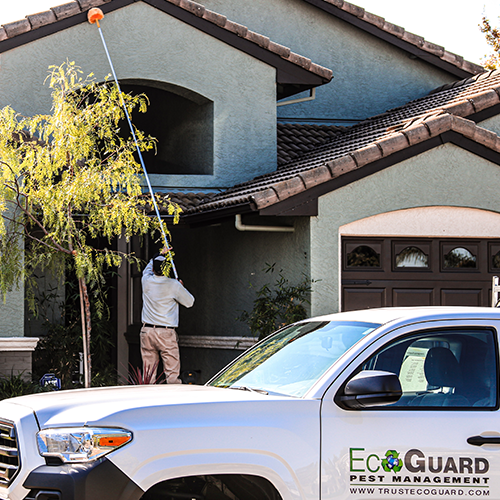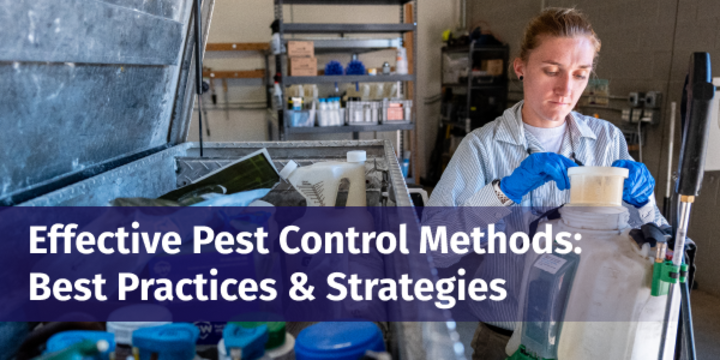Custom-made Pest Control Homestead Plans for Optimum Protection
Wiki Article
Discover the Secrets of Bug Control: Exactly How It Works and Refine Revealed
Pest control is a thorough technique that entails a deep understanding of pest actions, tactical planning, and exact execution. From identifying the origin creates of infestations to carrying out customized control procedures, the process of parasite control is a blend of science and method aimed at keeping an unified environment.Insect Habits Comprehending
Understanding the intricate actions of insects is critical for efficient insect control administration. The behavior of roaches, such as their choice for dark and humid atmospheres, guides pest control experts in figuring out where to concentrate therapy efforts.By staying abreast of the latest research study on insect behavior, parasite control professionals can consistently refine their approaches and remain ahead of advancing insect populations. Ultimately, a deep understanding of bug actions is a keystone of successful parasite control management.

Evaluation and Recognition Methods
Efficient pest control management relies heavily on careful evaluation and precise identification techniques to precisely assess infestations and establish targeted elimination strategies. Examination involves an extensive assessment of the residential or commercial property to figure out the degree of the insect problem, identify the sort of bug present, and situate prospective access points. This process may include aesthetically evaluating common hiding spots, making use of surveillance tools such as cams or traps, and analyzing pest droppings or damages indications.Identification is an essential step that adheres to evaluation, as different pests need specific treatment approaches. Bug control experts use their experience and expertise of insect behavior to determine the types present accurately. This may involve taking a look at physical characteristics, such as dimension, color, and markings, in addition to examining the bug's behaviors and habitats. In some instances, samples may be gathered for more evaluation in a research laboratory to validate the bug species.
Pest Control Procedures Execution
Having thoroughly examined and precisely recognized the pests existing, the next vital step is the execution of targeted parasite control procedures to properly remove the problem. As soon as the sort of insect has been established, tailored approaches are employed to attend to the details risk. Typical parasite control techniques consist of chemical treatments, biological controls, and physical barriers. Chemical therapies involve the usage of pesticides to remove pests, while organic controls introduce all-natural predators to manage bug populations. Physical barriers such as sealing access factors or setting up traps are likewise reliable in protecting against bugs from spreading or entering within a residential property.Correct application of parasite control actions needs proficiency to ensure the security of residents and the atmosphere. When using chemicals and to make use of proper safety tools, it is essential to adhere to laws and standards. Tracking and follow-up examinations are necessary to assess the efficiency of the selected techniques and make any required adjustments. By utilizing targeted parasite control measures, invasions can be effectively gotten rid of, creating a healthier and pest-free environment.
Environmental Influence Considerations
When applying insect control steps,Careful assessment of the potential ecological impact is an important aspect. Bug control techniques can have different results on the setting, consisting of non-target species being impacted, contamination of soil and water resources, and interruption of the community. It is important to take into consideration these elements to decrease any type of negative repercussions on the atmosphere.To alleviate environmental influences, incorporated parasite administration (IPM) approaches are often advised. IPM concentrates on making use of a mix of methods such as biological control, environment adjustment, and the targeted use chemicals as a last option. Pest Control Homestead. By employing an alternative approach, IPM aims to manage pests efficiently while decreasing harm to the setting

Ongoing Monitoring and Avoidance
Constant surveillance and avoidance play critical functions in maintaining reliable bug control techniques in time. As soon as first insect control steps have been carried out, ongoing monitoring becomes important to track parasite activity degrees and make sure that the picked methods are functioning effectively. Regular examinations by trained professionals permit the early detection of any indications of insect resurgence, making it possible for quick activity to be taken prior to the infestation rises.
Preventative measures are just as crucial in maintaining a pest-free environment. Applying techniques such as securing access points, preserving sanitation, appropriate waste management, and decreasing sources of food and water deny bugs of the fundamentals they require to grow. By proactively resolving these variables, the likelihood of a bug infestation is significantly lowered.
Moreover, preventive actions contribute to the long-term success of pest control initiatives, minimizing the need for reactive treatments and connected costs. By integrating recurring monitoring and avoidance right into a thorough parasite management strategy, companies and people can efficiently secure their buildings against undesirable trespassers.
Verdict
In verdict, insect control includes understanding bug behavior, carrying out detailed examinations, implementing control actions, thinking about environmental influences, and keeping continuous surveillance and prevention. By following these actions, bug problems can be successfully taken care of and controlled. It is vital to take a positive approach to pest control to safeguard both human health and wellness and the atmosphere.By staying abreast of the latest research on insect behavior, insect control professionals can consistently fine-tune their strategies and remain in advance of developing bug populations.Having carefully checked and properly recognized the pests existing, the next vital action is the implementation of targeted pest control actions to properly remove the invasion.Furthermore, choosing environmentally friendly pest control products and techniques can significantly minimize the eco-friendly footprint of insect administration techniques - why not look here Pest Control Homestead. Once initial right here insect control measures have actually been implemented, ongoing monitoring becomes vital to track insect activity degrees and ensure that the chosen techniques are working properly.In conclusion, pest control includes understanding insect habits, carrying out thorough examinations, executing control actions, taking into consideration environmental effects, and keeping continuous tracking and prevention
Report this wiki page